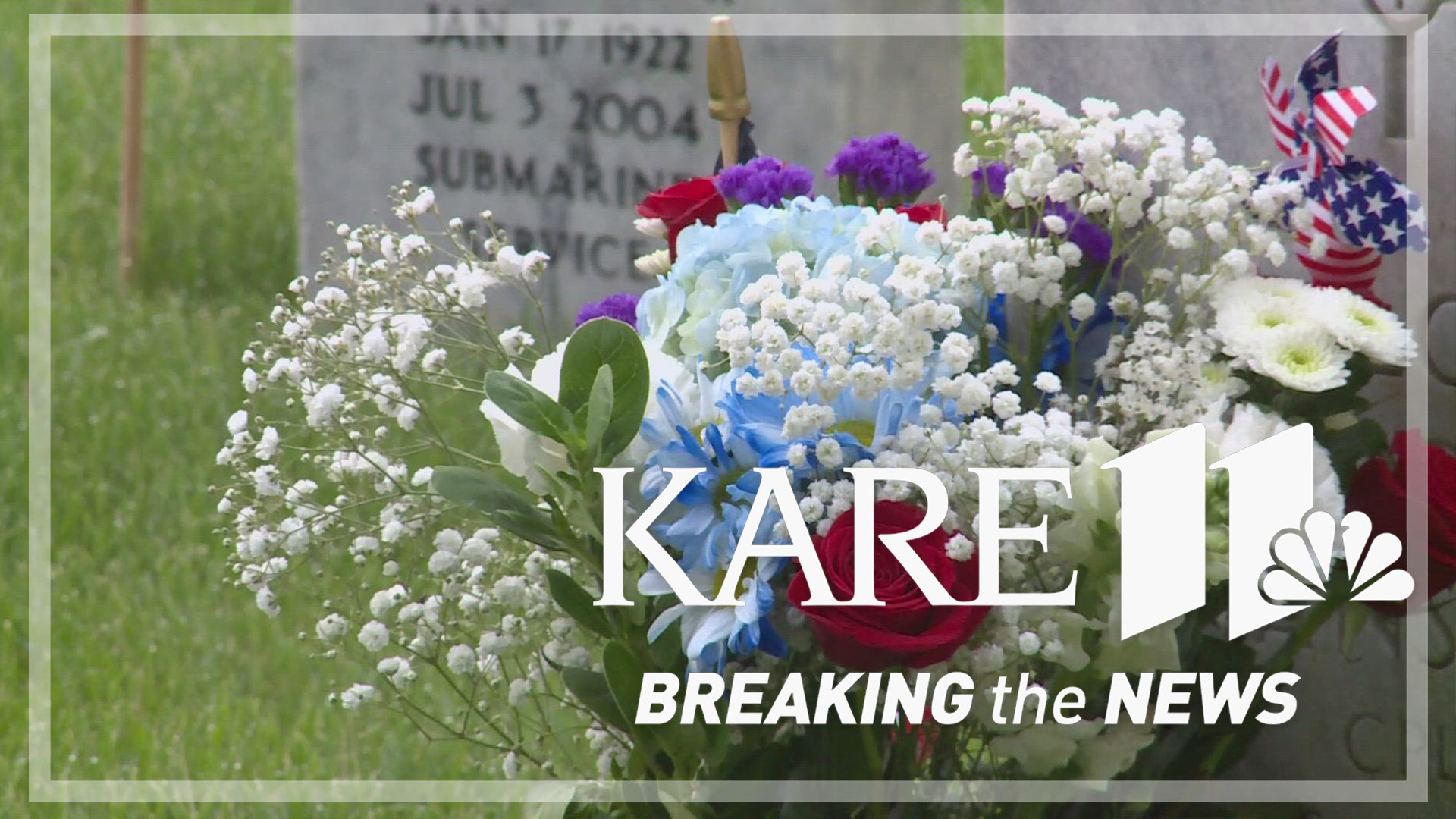ST PAUL, Minn. — For many Americans, Memorial Day marks the unofficial start of summer.
It's a three-day weekend filled with grilling, parades, and sales at local stores, but there's a deeper meaning that many have forgotten.
According to the National Cemetery Administration, Memorial Day can be traced back to the final years of the American Civil War.
The bloody conflict claimed the lives of around 620,000 Americans, more than all other American wars and conflicts combined. Historians say the families of these fallen soldiers were looking for ways to honor their loved ones.
"People started to go to cemeteries to decorate the graves of the people they knew, people who were important to them," Tom Lalim from the Minnesota Historical Society explained.
Family members would often place flowers and small American flags at the grave sites as a sign of respect.
This practice can be traced back to several countries and cultures over the years, as far back as ancient Roman times, according to the National Cemetery Administration.
Historical records show several communities hosted "decoration days" in the spring time to honor service members in their community.
According to the National Cemetery Administration, Memorial Day was officially established on May 5, 1868 when Major General John A. Logan of the Grand Army of the Republic issued General Orders Number 11 known as the "Memorial Day Act."
The date of May 30th was chosen, with the first national "Decoration Day" celebration taking place at Arlington National cemetery in 1868.
In 1873, New York became the first state to officially recognize the holiday, and by 1890 all other Union states had officially adopted the holiday, according to the National Cemetery Administration.
"This continued throughout the second half of that century. By the time of the First World War, the Civil War generation had passed, but then America found itself in two foreign wars, the First World War and the Second World War," Lalim explained.
With new generations of mourners looking for a way to honor their lost loved ones, Memorial Day soon became known as a day to honor lost service members from all American wars and conflicts.
On May 30, 1966, the federal government declared Waterloo New York as the "birthplace" of Memorial Day as the community celebrated its 100th Memorial Day that year.
Two years later, the Uniform Monday Holiday Act was passed.
The act moved three federal holidays to occur on Mondays every year, Memorial Day on the last Monday in May, President's Day on the third Monday in February, and Columbus Day as the second Monday in October. The act officially went into effect in 1971. Martin Luther King Jr. Day would later be added as the third Monday in January.
"As you can see, it's much more than just the beginning of summer and summer vacation and lake time. It's a way to remember those who sacrificed for our country," Lalim explained.
"It's a way to honor our past and hopefully learn from it so as a nation we don't repeat some of those mistakes that we made. A reminder so we don't fight another civil war, that hopefully we can find solutions to our problems by talking to one another."
Watch more Breaking The News:
Watch all of the latest stories from Breaking The News in our YouTube playlist:
WATCH MORE ON KARE 11+
Download the free KARE 11+ app for Roku, Fire TV, Apple TV and other smart TV platforms to watch more from KARE 11 anytime! The KARE 11+ app includes live streams of all of KARE 11's newscasts. You'll also find on-demand replays of newscasts; the latest from KARE 11 Investigates, Breaking the News and the Land of 10,000 Stories; exclusive programs like Verify and HeartThreads; and Minnesota sports talk from our partners at Locked On Minnesota.
- Add KARE 11+ on Roku here or by searching for KARE 11 in the Roku Channel Store.
- Add KARE 11+ on Fire TV here or by searching for KARE 11 in the Amazon App Store.
- Learn more about the KARE 11+ app for Apple TV in the Apple App Store.
- Learn more about KARE 11+ here.

